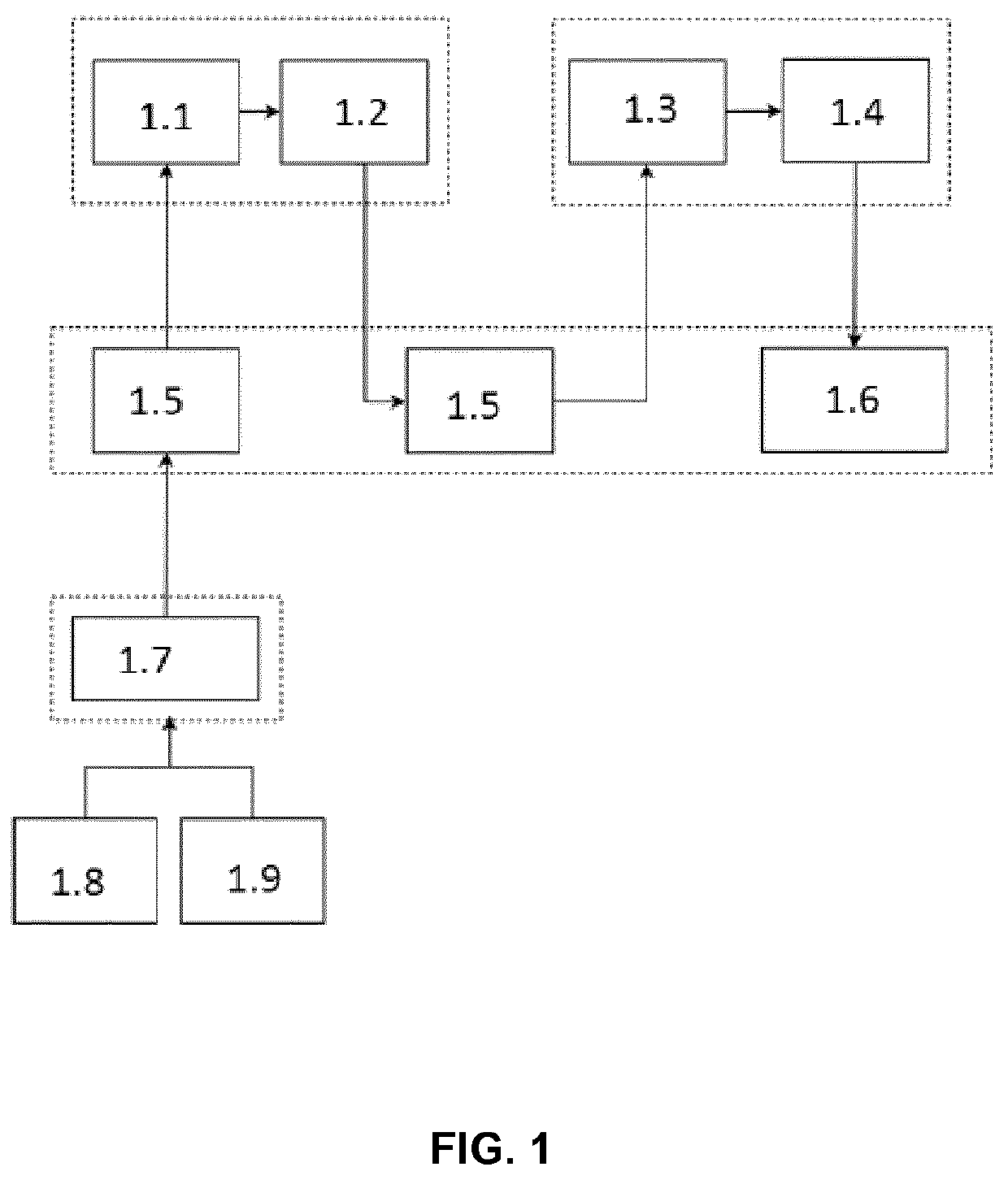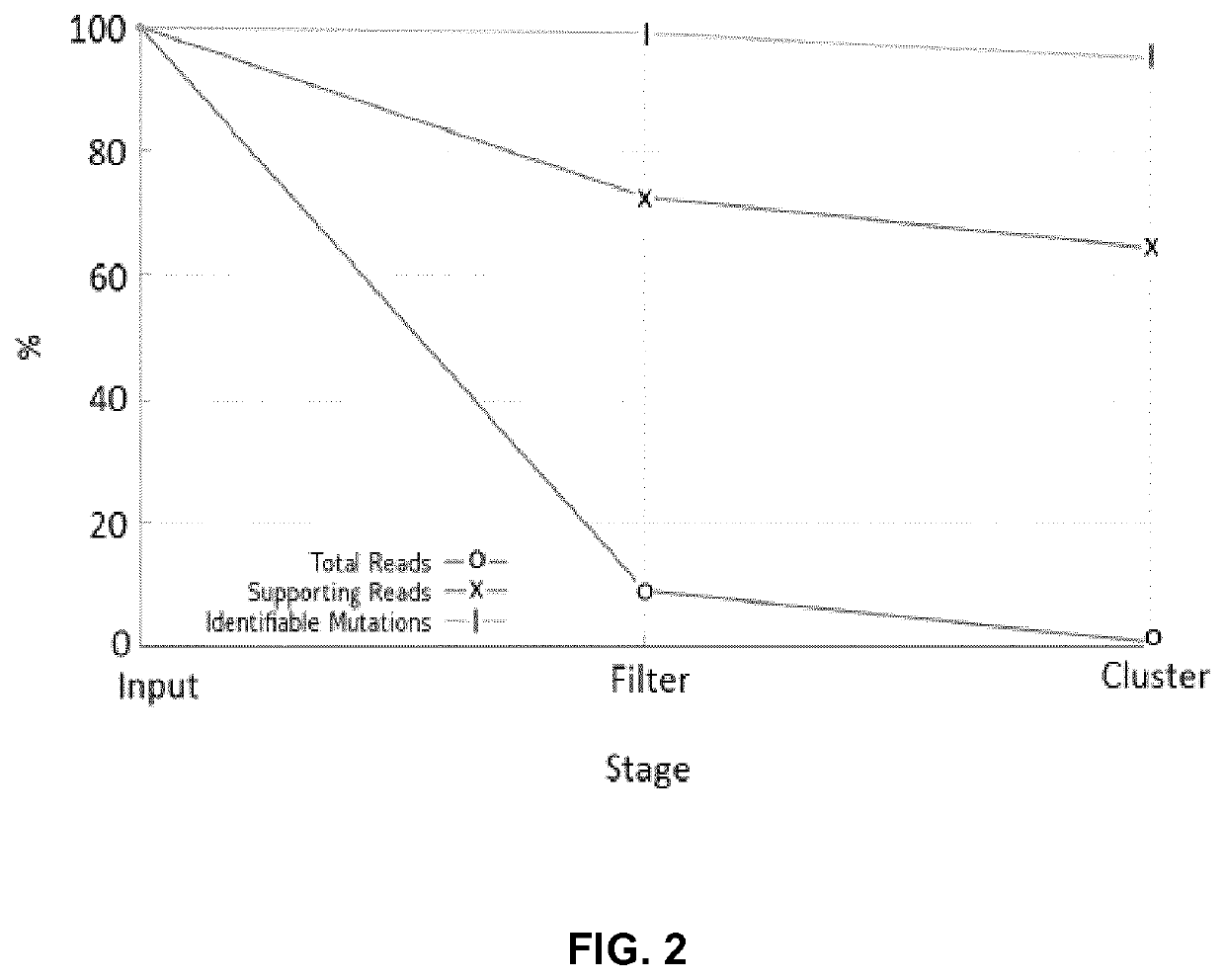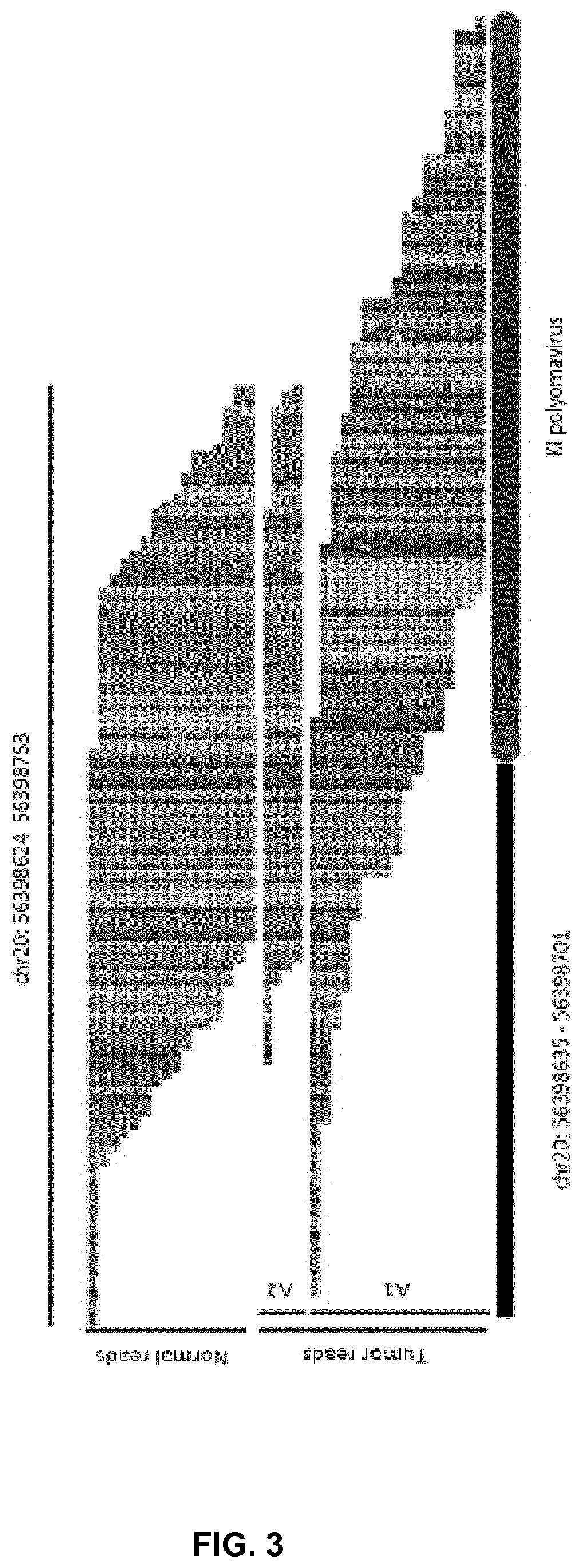A computer-implemented and reference-free method for identifying variants in nucleic acid sequences
a nucleic acid sequence and variant technology, applied in the field of computer-implemented and reference-free methods for identifying variants in nucleic acid sequences, can solve the problems of large amount of computing resources and limitations of use of k-mers, and achieve the effect of accurate identification of all types and unprecedented performan
- Summary
- Abstract
- Description
- Claims
- Application Information
AI Technical Summary
Benefits of technology
Problems solved by technology
Method used
Image
Examples
examples
[0126]Examples of using the method of the invention for detecting characterizing sequence variants in nucleic acid sequences are given below.
[0127]In the in silico tests it is revealed that the method of the invention is capable of identifying SNVS and SVs of all sorts and sizes. Remarkably, the method of the invention is even proven to be capable of identifying novel non-human insertions. In one of the examples found below, the method is remarkably capable of detecting the insertion of a virus where, other methods (including the one disclosed in Moncunill et al., ibid) fail.
[0128]Material and Methods
[0129]An implementation of the computer-implemented method
[0130]The general structure and the complete variant identification and characterization carried out by the method of the invention comprise the steps outlined below:
[0131]A) Input data.
[0132]As input, the method takes high quality sequences data directly from FASTQ files of tumor and non-tumor control cells samples of the same i...
PUM
 Login to View More
Login to View More Abstract
Description
Claims
Application Information
 Login to View More
Login to View More - R&D
- Intellectual Property
- Life Sciences
- Materials
- Tech Scout
- Unparalleled Data Quality
- Higher Quality Content
- 60% Fewer Hallucinations
Browse by: Latest US Patents, China's latest patents, Technical Efficacy Thesaurus, Application Domain, Technology Topic, Popular Technical Reports.
© 2025 PatSnap. All rights reserved.Legal|Privacy policy|Modern Slavery Act Transparency Statement|Sitemap|About US| Contact US: help@patsnap.com



